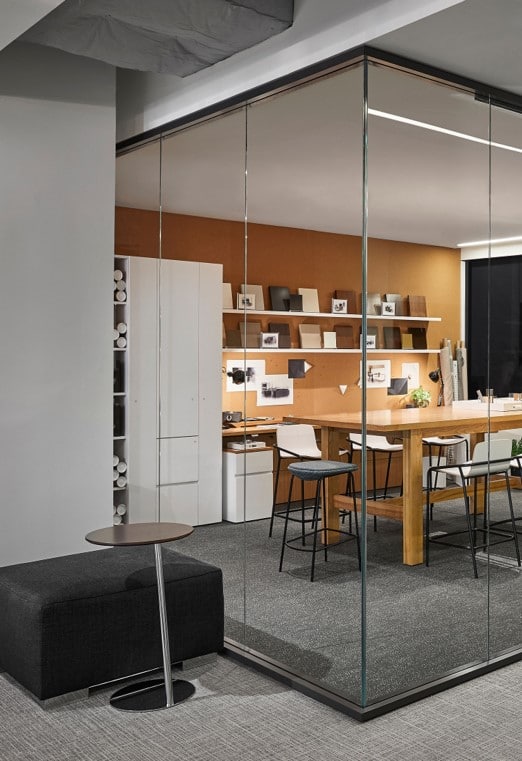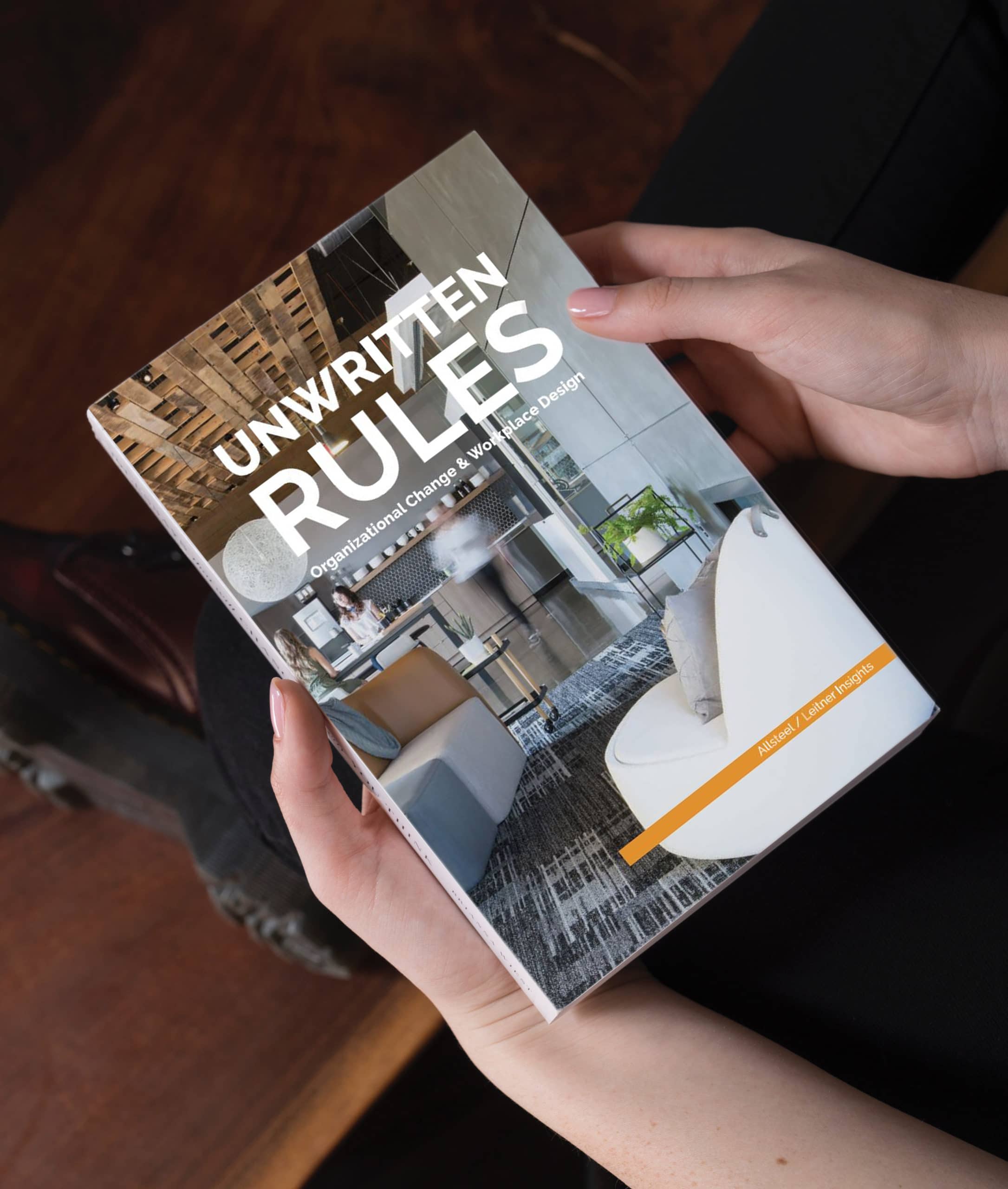Did your New Year’s resolutions include strategies for a healthier work day?
In case they didn’t, here’s a handy ‘Office Wellness Checklist’ to help your work year off to a good start.
Check your sitting position:
 We sit at work and at home, often far too much and without regard to good posture. By making a few small adjustments, we can avoid undue back, shoulder and neck pain.
We sit at work and at home, often far too much and without regard to good posture. By making a few small adjustments, we can avoid undue back, shoulder and neck pain.
The most obvious way to better posture is to use an ergonomically supportive office chair. A good office chair will respond to your movements and provide support for a number of positions including sitting back, sitting upright and working at a desk.
Adjustable lumbar support, arm supports and seat height are important.
Mimeo by Allsteel is one of our top picks.
Posture tips:
- keep your back straight – don’t slouch
- make sure that your weight is evenly distributed between both hips – don’t sit leaning toward one side or twist your back
- keep your head and neck aligned with your shoulders – dont’ crane your neck forward, up or down
- make sure your chair height is correct – your hips should be slightly higher than your knees
- use a footstool to relieve pressure on the back of your legs
- do not sit for more than 15 or 30 minutes – set an alarm to remind you to get up and move around
- if you have a long commute sitting in transit or driving to and from work, remember to shift your position frequently and if necessary invest in a portable lumbar support
Avoid Standing Motionless:
 Sitting for long periods of time is extremely bad for your overall health. Alternating sitting and standing every 15 to 30 minutes is best. A height adjustable desk makes this easy to do without having to leave your desk and the task you’re busy with. Remember that standing in one position is also bad, so move around as you stand so that your overall body position is continually moving.
Sitting for long periods of time is extremely bad for your overall health. Alternating sitting and standing every 15 to 30 minutes is best. A height adjustable desk makes this easy to do without having to leave your desk and the task you’re busy with. Remember that standing in one position is also bad, so move around as you stand so that your overall body position is continually moving.
Our top pick for a height adjustable desk system is Allsteel’s Futher Adaptive.
Tips to increase mobility:
- take frequent short breaks to fetch a glass of water. It will get you moving and the water will help hydrate you
- take the stairs rather than the elevator whenever possible
- have walking rather than sit down meetings
- instead of messaging or calling colleagues within the same building, take a walk to speak with them face to face
- don’t have lunch at your desk. Go outside, take a walk and have a proper break.
Adjust computer keyboard, monitor and mouse positions:
 Make sure that your computer monitor is positioned at eye level to avoid strain on your eyes, neck, shoulders and back. Set the screen brightness so that it is comfortable and if light conditions change, remember to adjust the screen accordingly. Incorrect positioning of your keyboard can result in carpel tunnel syndrome or tendonistis. Avoid this by positioning your keyboard so that your arms and wrists are in a comfortable position as you work. Your elbows should be hanging comfortably at your sides, your shoulders relaxed, your forearms parallel to the floor so that you are able to work without strain to your hands, wrists, elbows, arms, shoulders or back. If you can’t adjust the height of your work surface to achieve this, adjust your chair height and / or use an adjustable keyboard tray attached to your desk. Always keep your mouse positioned close to your body rather than on the far side of your computer.
Make sure that your computer monitor is positioned at eye level to avoid strain on your eyes, neck, shoulders and back. Set the screen brightness so that it is comfortable and if light conditions change, remember to adjust the screen accordingly. Incorrect positioning of your keyboard can result in carpel tunnel syndrome or tendonistis. Avoid this by positioning your keyboard so that your arms and wrists are in a comfortable position as you work. Your elbows should be hanging comfortably at your sides, your shoulders relaxed, your forearms parallel to the floor so that you are able to work without strain to your hands, wrists, elbows, arms, shoulders or back. If you can’t adjust the height of your work surface to achieve this, adjust your chair height and / or use an adjustable keyboard tray attached to your desk. Always keep your mouse positioned close to your body rather than on the far side of your computer.
More useful tips on ergonomics in the office:
Green your work space:
 Plants help freshen the air by removing harmful toxins produced by the materials in the office. They also provide a sense of tranquility, lowering stress levels and increasing a sense of well being. If you’re not fortunate enough to have a ‘living wall’ in your office, you can still enjoy the benefits with a few well placed plants on or around your desk.
Plants help freshen the air by removing harmful toxins produced by the materials in the office. They also provide a sense of tranquility, lowering stress levels and increasing a sense of well being. If you’re not fortunate enough to have a ‘living wall’ in your office, you can still enjoy the benefits with a few well placed plants on or around your desk.
Work in natural light:
 We all need natural light to function at our best. Fortunately, most modern offices are designed to allow greater access to this life giving resource. Glass architectural walls such as the Beyond range from Allsteel are an easy way to achieve an office design offering both privacy and unrestricted flow of light. When redesigning your office and incorporating glass walls is not an option, investing in good task lighting, or even a daylight lamp designed to combat seasonal affective disorder will help.
We all need natural light to function at our best. Fortunately, most modern offices are designed to allow greater access to this life giving resource. Glass architectural walls such as the Beyond range from Allsteel are an easy way to achieve an office design offering both privacy and unrestricted flow of light. When redesigning your office and incorporating glass walls is not an option, investing in good task lighting, or even a daylight lamp designed to combat seasonal affective disorder will help.
Manage the acoustics:
 Open plan offices have many advantages, but one downside that occupants often find a challenge is ambient noise. While acoustic management is part of the modern office design, there are some basic, low tech, yet pretty effective alternatives if the office buzz is bothering you. Comfortable noise cancelling headphones, or even construction ear plugs can help block out distracting noise, lowering your stress level and increasing your ability to concentrate.
Open plan offices have many advantages, but one downside that occupants often find a challenge is ambient noise. While acoustic management is part of the modern office design, there are some basic, low tech, yet pretty effective alternatives if the office buzz is bothering you. Comfortable noise cancelling headphones, or even construction ear plugs can help block out distracting noise, lowering your stress level and increasing your ability to concentrate.




